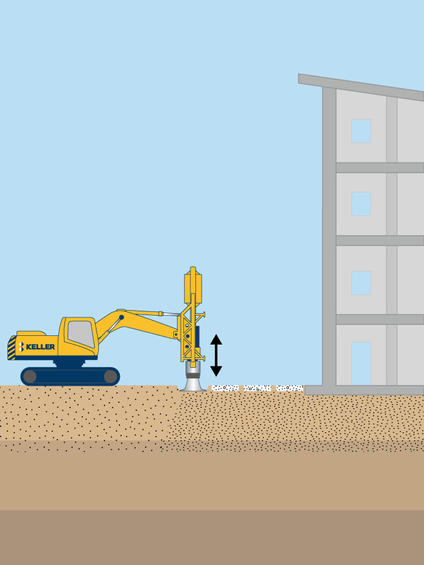Rapid impact compaction densifies shallow, granular soils, using a hydraulic hammer, which repeatedly strikes an impact plate on the ground surface.

Common uses
Process
Energy is transferred to the underlying loose granular soils rearranging the particles into a denser formation. The locations of impact are typically located on a grid pattern, with spacing determined by the subsurface conditions and foundation loading and geometry.
Advantages
Quality assurance
The energy and deflection of the soil is monitored and recorded at each location, which allows the geotechnical engineer to determine when effective treatment is complete. It also enables the engineer to identify weak zones (red dots) or debris zones throughout the pad so that any remedial actions that may be required can be minimized resulting in cost savings.